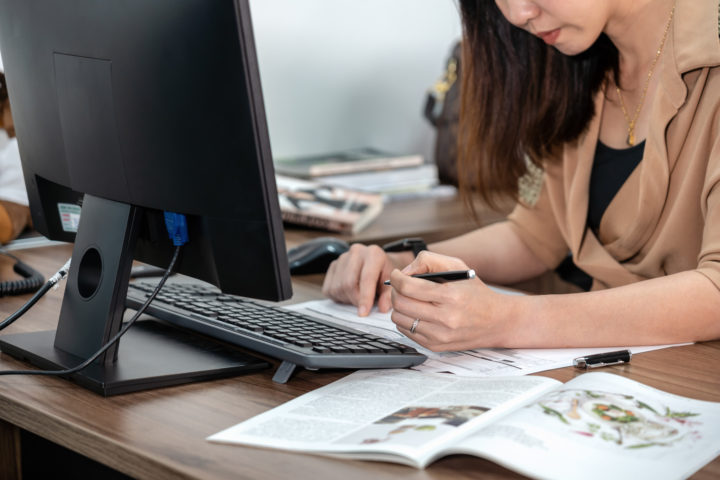Introduction to Gift Aid
Overview
- What is Gift Aid and how can it help?
- How to get the most out of Gift Aid
- Gift Aid in fundraising
- The Gift Aid Small Donations Scheme (GASDS)
- What if things go wrong?
- Simple tips to help you increase your Gift Aid uptake
- Further resources
What is Gift Aid and how can it help?
Gift Aid is a scheme that allows charities and Community Amateur Sports Clubs (CASCs) to claim an extra 25p from HM Revenue & Customs (HMRC) for every £1 donated by an eligible taxpayer. To qualify for Gift Aid, both the organisation receiving the donation and the donor must meet certain eligibility criteria.
Higher-rate taxpayers can claim the difference between the basic rate of tax (20%) and their higher rate of tax (40% or 45%), so the donation costs them less to make, although you still only receive 25%.
For you to claim Gift Aid for a donation, the donor must be a UK taxpayer and provide a declaration that states they would like the charity to claim. Claiming Gift Aid comes at no extra cost to the donor.
Charities must keep records for six years to support their Gift Aid claims.
Organisations that are eligible to claim:
Charities
- Must be registered with a charity regulator (e.g. the Charity Commission for England and Wales, OSCR in Scotland, or CCNI in Northern Ireland) unless exempt or excepted.
- Must operate on a not-for-profit basis and use income exclusively for charitable purposes.
- Can include religious organisations, educational charities, healthcare charities, and international aid organisations.
Community Amateur Sports Clubs (CASCs)
- Must be registered with HMRC as a CASC.
- The organisation must promote participation in amateur sports.
- Must meet specific criteria, such as being open to all and operating for the benefit of the community.
Exempt Charities
- Some organisations are exempt from registration but still qualify for Gift Aid (e.g. universities, academies, and certain religious institutions).
Excepted Charities
- Certain charities, like smaller religious organisations, may not need to register but are eligible if they meet Gift Aid criteria.

How to get the most out of Gift Aid
Supporters are more likely to use Gift Aid if they are asked to do so and if they understand the valuable extra benefit that it brings to your charity without any additional cost to them.
Make use of practical examples to explain in real terms what the Gift Aid money will enable you to do. If charities explain this in a consistent way and do so every time the donor is asked to give, it will increase general awareness and take-up of Gift Aid by the public.
Promoting Gift Aid to your donors could look like:
‘Use Gift Aid and you can make your donation worth more. For every pound you give to us, we can claim back 25p from HMRC. So just tick here. It’s that simple’.
or
‘Using Gift Aid means that for every £1 you give, we can claim back 25p from HMRC, helping your donation go further. This means that £100 can be turned into £125 just so long as donations are made through Gift Aid. Imagine what a difference that could make and it doesn’t cost you a thing. So if you want your donation to go further, Gift Aid it. Just tick here. It’s that simple’.
If you’re a higher-rate taxpayer (40% or 45%), you also benefit by claiming the difference between your higher tax rate and the basic rate of 20%. This means for example that as a 40% taxpayer: You can claim back 20% of the gross donation (£125), saving you £25. So, your £100 donation effectively costs you just £75, but the charity still receives £125.
Gift Aid in fundraising
Gift Aid can be used successfully with different fundraising mechanisms and should be seen as an addition to your existing fundraising strategy.

Developing a fundraising strategy
Further resources for developing an effective fundraising strategy can be found on this course
The success of Gift Aid relies upon it being promoted constantly and consistently so consider what communications you already use where you could promote Gift Aid.
Ways to include Gift Aid in activities you may already be using could include:
Membership
You can claim Gift Aid on membership fees provided the benefits do not exceed HMRC’s benefit rules. Remember that Gift Aid applies to donations where no benefit is rewarded to the donor in return for the gift i.e. it does not apply to payments for goods or services such as a ticket for an event.
However, a small token of appreciation or ‘thank you’ is allowed, for example a newsletter for members or small value gift. For donations up to £100 the value of benefits must not exceed 25% of the donation.
Sponsored Events
Make sure that sponsor forms have a Gift Aid tick box and that you get the name, home address and this must also include the postcode of all sponsors.
Gift Aid can be reclaimed on most sponsored events unless the participant is receiving a benefit (such as overseas treks or challenge events), in which case donations from themselves or ‘connected persons’ cannot be Gift Aided.
Charitable Attractions
New rules for claiming Gift Aid on donations made by visitors to charity property came into effect on 6 April 2006. The guidelines apply to any charity that traditionally charges for viewing property that is preserved, maintained, kept or created by the charity as part of furthering its charitable purpose.
The guidelines allow more charities that charge an admission fee, such as gardens, art galleries and animal centres, to benefit from Gift Aid.
Donations made instead of an entrance fee will only be eligible for Gift Aid if the visitor pays at least 10% more than the normal admission charge, or if they entitle visitors to get into an attraction whenever it is open over a 12-month period, for example, through a membership scheme. If an entrance fee is £10 this would only be eligible for Gift Aid if the visitor paid £11 or above, or if the £10 fee allows admission for at least 12 months.
Charities must offer visitors a choice to pay the normal entry fee only or the admission price plus a donation at the time of entry, and the choice not to pay a donation will not affect their right to admission.
If you do not give visitors a clear choice to pay the standard entry fee or make a donation of 10% or more, then any payment that exceeds the standard entry fee by 10% or more is not a freely-given gift. In this case, payment would not be eligible for Gift Aid.
Donated Goods
Gift Aid can be reclaimed on items donated to charity shops. This involves converting the item into a cash donation by the charity acting as an agent for the donor, selling the item and then offering the cash back to the donor. If the donor then chooses to donate the cash to the charity, then Gift Aid can be claimed.
A clear record linking donors to each item and the cash they have raised is essential as is permission to Gift Aid the cash raised from that item. It can therefore be administratively demanding, but there are software packages to help manage the process.
Sue Ryder Care pioneered the claiming of Gift Aid on donated goods. See how they sign donors up for this type of Gift Aid on their website.
Be aware that Gift Aid cannot be applied on payments to buy goods such as Christmas cards, although additional voluntary donations can be Gift Aided.
Collections
Gift Aid cannot currently be claimed on bucket or tin collections where there is no Gift Aid declaration or audit trail linking the donor to their donation, unless this is claimed under the Gift Aid Small Donation Scheme (see below).
However, if you use sealed collection envelopes with the Gift Aid declaration printed on them and keep appropriate records then you can claim Gift Aid on collections. Similarly, you can claim Gift Aid on the collection boxes designed for use in donors’ homes for their small change.
Auctions
In some cases, part of the money bid for an item in a charity auction can be increased through Gift Aid. This is so only where the item has a clear market value, which must be stated at the time of the auction. For example, if £700 is bid for a pair of travel tickets that cost £500 at the travel shop on the high street, the excess of £200 can be treated as a donation eligible for Gift Aid.
You should get a Gift Aid declaration from the donor in respect of this donated element, if you do not already have one. Celebrity-endorsed or unique items do not have a clear market value, but are worth whatever is paid for them. The price bid for these does not , therefore, include a donated element and Gift Aid is not applicable.
It is worth noting that Gift Aid cannot be claimed on raffles or lotteries. Buying a ticket for a raffle, lottery or ‘100 Club’ draw is a payment for the right to enter and take part in the competition, regardless of who wins and the value of the prize. It is not, therefore, a donation and Gift Aid cannot be used.
The Gift Aid Small Donations Scheme (GASDS)
The Gift Aid Small Donations Scheme allows Gift Aid to be claimed without a Gift Aid declaration on cash donations of £30 or less and contactless card donations of £30 or less collected on or after 6 April 2019.
From 6 April 2016, you can claim up to £2,000 in a tax year or £1,250 for earlier years.
To make these claims, you need to record (or have records of) the total cash donations collected, date of the collection and the date it was paid into a bank account.
You’ll need to keep records of any contactless card donations that you’ve taken, for example receipts from your card machine. You can only claim GASDS if you have made successful Gift Aid claims in at least two of the previous four tax years, without significant issues.

Claiming Gift Aid as a charity
See the UK Government website for more information on the small donations scheme.
What if things go wrong?
Where you hold a Gift Aid declaration, but it turns out that the donor has not paid enough tax to cover the tax you have reclaimed from the HMRC, it is the donor who will incur a tax liability for the shortfall.
The charity’s tax claim is not legally affected. You may, however, want to discuss the matter with the HMRC to see whether anything may be arranged on the donor’s behalf.
Simple tips to help you increase your Gift Aid uptake
Nominate a Gift Aid Ambassador (Staff or Volunteer)
Nominate a person in your charity responsible for making sure that the organisation maximises the take-up of Gift Aid, and maybe even tax-effective giving as a whole.
The individual should brief all staff and volunteers, new and old, about the benefits of Gift Aid and tax effectiveness. This would be a useful topic at staff meetings and conferences.
Write a Simple Briefing on Gift Aid (And Other Tax-Effective Ways of Giving) for All Supporters
Gift Aid is often misunderstood or avoided due to ignorance. It is only to be expected that donors may have questions or concerns about Gift Aid, and a Q&A style briefing is an easy way to address these concerns.
Consider developing income streams which are eligible for Gift Aid
Develop income streams on which Gift Aid can be claimed e.g. sponsored events, regular giving and auctions.
Build Your Gift Aid Targets Into Your Fundraising Strategy
Gift Aid targets could be included in your annual report, in strategic plans and in people’s individual performance objectives.
What’s a suitable target for Gift Aid?
Some national charities have been able to reached conversion rate of 80% of donations (eligible for Gift Aid). Though this may not be realistic for smaller organisations, many professional fundraisers believe that 75% (of eligible donors) is a realistic and achievable target.
Whilst claiming Gift Aid does not cost you anything financially, it will require staff time. Remember to build this into your work plans, staff/volunteer role descriptions or objectives to ensure it is resourced properly. Please see the guidance below for instructions and guidance on how to claim Gift Aid.
Further resources
Gift Aid Guidance – Claiming Gift Aid as a Charity
UK Government
Gift Aid Guidance – Gift Aid Donation Claims for Charities
UK Government

